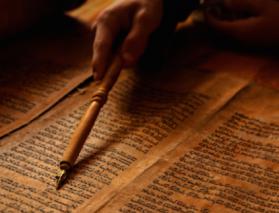In his The Lord Has Saved Me , Michael Barre points to various numerical and other patterns used in the Psalms. Barre’s discussion of the Psalm of Hezekiah (Isaiah 38) gets extremely detailed, but his introduction to the techniques of Hebrew poetry is excellent.
For instance: “Several Biblical Hebrew poems have the same number of words in their major sections (with a variation of one word in some cases). Psalm 91 has fifty-six words in each of its two major sections (vv. 1–8, 9–16). Psalm 116 has sixty-three words in its first major section (vv, 1–9) and sixty-four in the second (vv. 10–19). Other indications of word-counting are found in Psalm 101, where the key word lebab , ‘heart,’ occurs in only three places in the psalm: as the fifteenth word (v. 2b), the thirtieth word (v. 4a), and the forty-fifth word (v. 5b). In Psalm 23 the colon that is literally and thematically central— kî attâ immadî , ‘for you are with me’ (v. 4ca)—is preceded and followed by nine cola. But its centrality may also be determined by word-count: these three words are preceded and followed by exactly twenty-six words.”
Chiastic structures are, he points out, common, including chiastic fragments: :in Psalm 91 elyôn in v. 1a and (la)yhwh mahsî in v. 2a at the beginning of Part I (vv. 1–8) are repeated (in reverse order) at the beginning of Part II (vv. 9–16), i.e., in v. 9. The poem contains only two instances of the root r’y , which appear at the end of Part I (v. 8b: tir<eh) and the end of Part II.”










